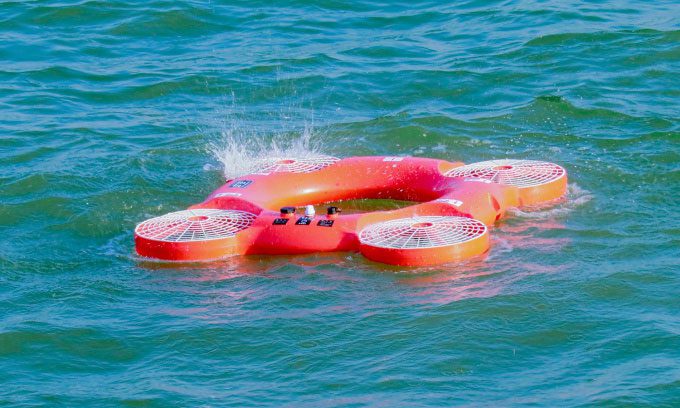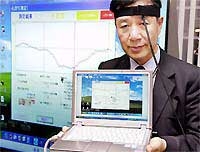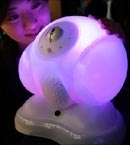The TY-3R drone can help two adults float on the water, has a communication range of 1.1 km, and operates for 10 minutes on a single charge.

The rescue buoy drone can take off and land directly on the water. (Photo: Didiok Makings)
The Chinese drone company Didiok Makings has developed the “Phao Bay TY-3R”, a vehicle that combines a quadcopter drone and a rescue buoy, as reported by New Atlas on April 29. When rescue teams onshore detect a person in distress swimming in the sea, they can activate the TY-3R, allowing it to quickly fly to the swimmer and land on the water, transforming into a rescue buoy. The swimmer can use it as a flotation device. Rescuers then have time to retrieve a rescue boat and navigate to the incident location to bring the victim back to shore.
The TY-3R takes off with just a press of a button on the remote control. During its flight to the designated location, the drone also provides the operator with real-time visual feedback via an integrated 720p camera. Once the victim is rescued and no longer needs the drone for flotation, the operator simply presses a button for it to automatically fly back to its launch point based on GPS coordinates. Notably, it can take off directly from the water’s surface.
The TY-3R can support two adults floating on the water, has a communication range of 1.1 km, a maximum speed of 47 km/h, and operates for over 10 minutes per battery charge. This drone weighs less than 5 kg and has excellent waterproof capabilities according to IP68 standards. This means it will not be damaged when submerged at a depth of 1 meter for 30 minutes.
Upon landing on the water, the TY-3R shuts off its motors. Additionally, the drone is equipped with protective shields on its propellers to better safeguard swimmers. This vehicle is currently priced at $11,803.
This is not the first rescue drone designed for swimmers in the world. Vehicles such as Pars (USA), Little Ripper (Australia), and Auxdron (Spain) also have the capability to perform this task, but their methods involve dropping separate flotation devices for the distressed individual rather than landing directly on the water.




















































